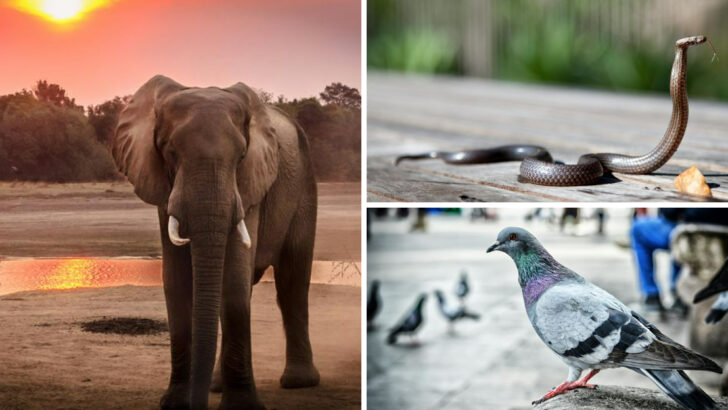In the animal kingdom, survival often hinges on the ability to anticipate danger. From seismic shifts to subtle changes in weather, some animals display an uncanny awareness of pending threats.
These instinctive behaviors can serve as fascinating indicators of environmental changes, offering insights into both animal behavior and natural phenomena.
Elephants
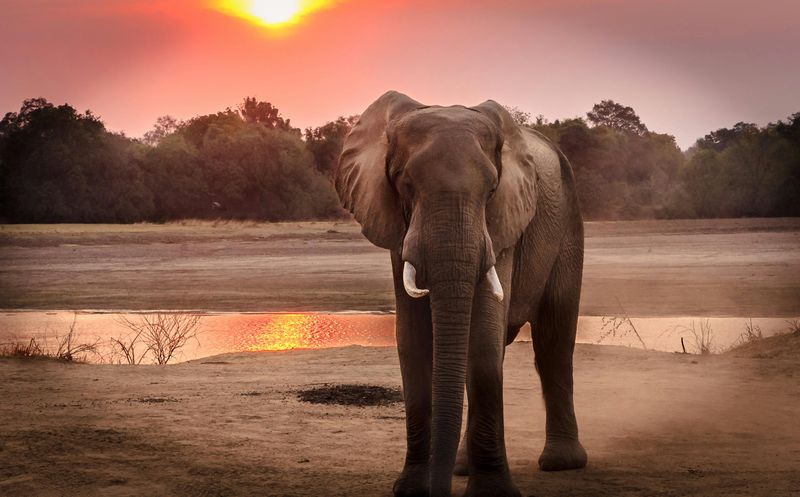
The mighty elephant, with its formidable size, exhibits a remarkable sensitivity to natural disturbances. Often before earthquakes, these gentle giants are seen moving to higher ground, fleeing the epicenter long before humans sense the tremors.
Researchers suggest their ability to detect infrasonic waves, vibrations traveling through the earth, allows them to anticipate seismic events. Their acute hearing further aids in detecting sounds imperceptible to the human ear.
This innate skill has evolved to protect not only themselves but their entire herds, showcasing a fascinating blend of intelligence and instinct. Such behavior underscores the intricate connections within the animal world.
Dogs

Canines have long been celebrated for their extraordinary sensory perceptions. Dogs, in particular, are known to react to atmospheric changes before storms arrive.
Their acute sense of hearing allows them to discern distant thunderclaps, while their sensitive noses detect changes in barometric pressure. These abilities often manifest as restlessness or anxious behavior in household pets when storms approach.
Beyond weather, dogs also perceive emotional changes in humans, exhibiting empathy and concern. Their heightened senses provide them with an awareness far beyond our own, making them not just loyal companions but intuitive guardians as well.
Cats

Felines possess an enigmatic blend of grace and awareness, often perceiving subtle shifts in their environment. Cats are known to sense atmospheric changes, reacting to impending storms with heightened alertness.
Their whiskers, finely tuned to vibrations in the air and ground, provide them with information about changes long before they’re visible. This sensitivity extends to their human companions, often providing comfort when they perceive emotional distress.
While their aloof nature may suggest indifference, cats exhibit a profound connection to their surroundings, making them both mysterious and insightful observers of the world.
Birds

Birds, with their ability to soar high above the earth, possess a unique vantage point. This perspective, combined with acute sight and sensitivity to atmospheric pressure, allows them to detect weather changes.
Before storms, many species will alter flight patterns, seeking shelter well in advance of rain. Their migratory instincts also showcase an ability to predict seasonal changes, often covering vast distances in anticipation.
These behaviors not only ensure their survival but have historically acted as natural barometers for humans. The intricate dance of avian life continues to captivate, reflecting nature’s complex web of connections.
Sharks
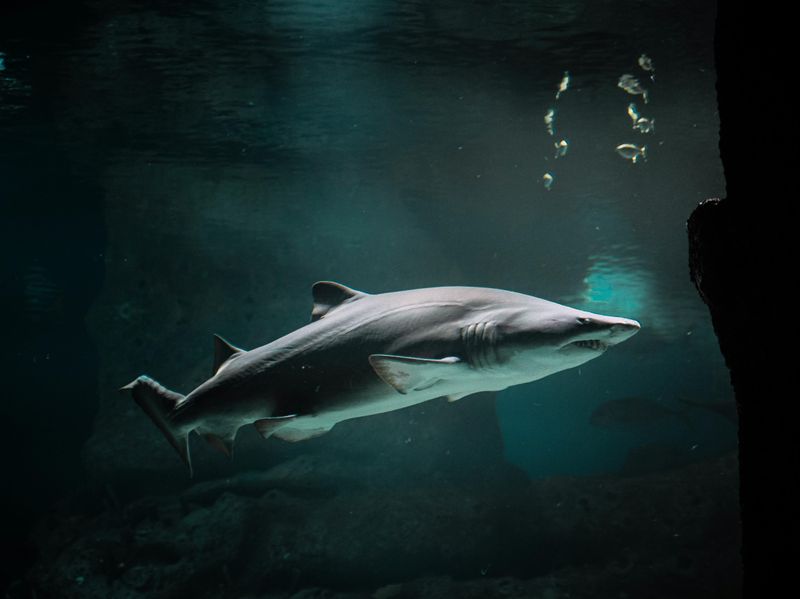
In the vast ocean, sharks reign as apex predators with keen senses finely attuned to their aquatic environment. Capable of detecting minute electrical signals, they are sensitive to changes in the water caused by storms or shifts in atmospheric pressure.
This sensitivity often prompts them to swim to deeper waters for safety. Additionally, sharks’ lateral lines help them sense vibrations, enabling them to detect approaching prey or potential threats.
These adaptations highlight their role as both hunter and sentinel in the marine ecosystem, offering a glimpse into the evolutionary marvels that equip creatures for survival.
Frogs
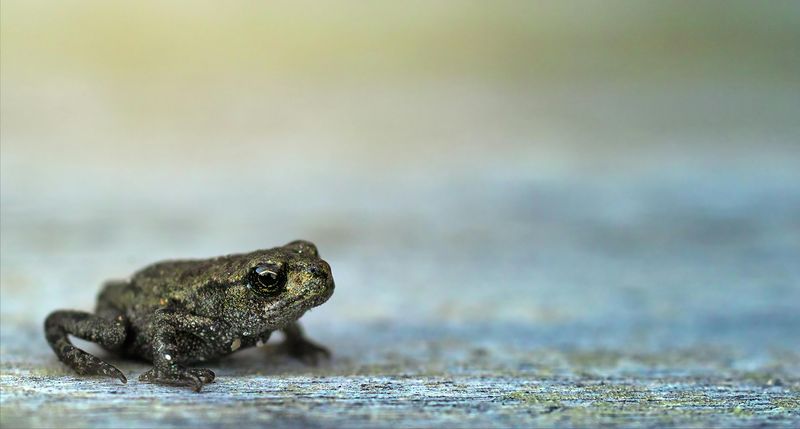
Frogs, with their vibrant calls, are often the heralds of rain. Their permeable skin is sensitive to moisture, making them keenly aware of humidity changes.
As atmospheric pressure drops, their vocalizations often increase, signaling approaching storms. This behavior is not just a response to weather but also a breeding strategy, as rain provides ideal conditions for laying eggs.
Their presence and behavior have long been considered reliable indicators of rain, serving as nature’s meteorologists. Frogs illustrate the delicate balance of ecosystems, where behavior and environment are interwoven in a symbiotic dance.
Rats
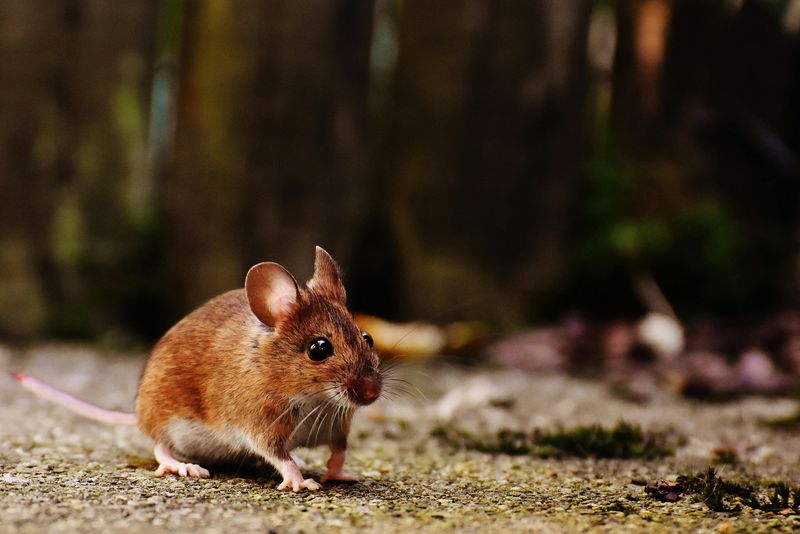
Often misunderstood, rats demonstrate remarkable survival instincts. In urban environments, they are known to vacate areas before floods or fires, guided by acute senses of smell and hearing.
Their ability to detect changes in atmospheric pressure and vibrations helps them foresee danger, prompting timely retreats. This adaptability has enabled them to thrive in diverse environments, often outsmarting human efforts to control their populations.
Despite their reputation, rats’ behaviors offer insights into survival strategies that are both fascinating and complex, showcasing a resourcefulness that ensures their persistence in the face of adversity.
Ants
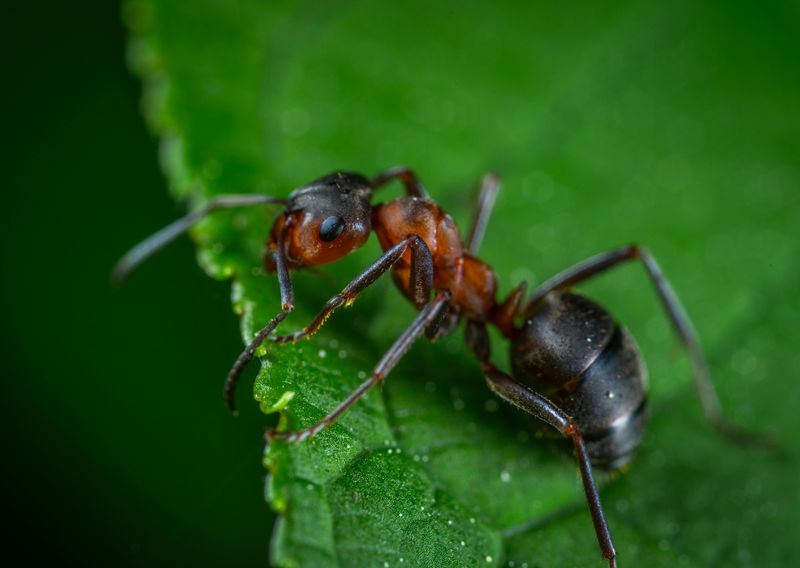
Ants, with their highly organized colonies, exhibit an impressive ability to sense environmental changes. Before rain, these industrious insects often reinforce their nests, ensuring protection from flooding.
Their antennae, sensitive to chemical changes and vibrations, alert them to shifts in weather. This behavior not only safeguards their colonies but also highlights their intricate social structures and communication methods.
Observing ants during weather changes can reveal much about their complex world, where teamwork and adaptation are key. Their actions serve as a reminder of the profound intelligence present in even the smallest creatures.
Snakes

Snakes, often associated with stealth, possess an acute sensitivity to their surroundings. They can detect vibrations through the ground, enabling them to sense approaching footsteps or changes in weather.
Their forked tongues gather chemical information from the air, providing crucial insights into environmental shifts. This heightened awareness allows them to evade predators and seek shelter before adverse conditions strike.
Despite their elusive nature, snakes play vital roles in ecosystems as both predator and prey. Their ability to sense danger is a testament to their adaptability, ensuring their survival across diverse habitats.
Bees

Bees, crucial pollinators in our ecosystems, display fascinating behaviors in response to weather changes. Before storms, they return to their hives en masse, ensuring the safety of the colony.
Their sensitivity to atmospheric pressure and humidity changes aids in these anticipatory actions. This behavior not only protects them but ensures the continuation of their critical role in pollination.
Bees’ responses to environmental shifts reflect their intricate social structures and the delicate balance of nature. Observing bees can provide insights into weather patterns, as these industrious insects navigate their world with precision and care.
Bats

Masters of nocturnal navigation, bats possess remarkable echolocation abilities, allowing them to detect obstacles and prey in complete darkness. Before storms, their flight patterns become erratic, as they respond to changes in air pressure.
This behavior aids in their survival, helping them return to safety before adverse weather hits. Bats play crucial roles in controlling insect populations and pollinating certain plants.
Their sensitivity to environmental changes underscores the intricate connections within ecosystems. By observing bats, we gain insight into the complex interplay of natural forces that govern the animal kingdom.
Deer
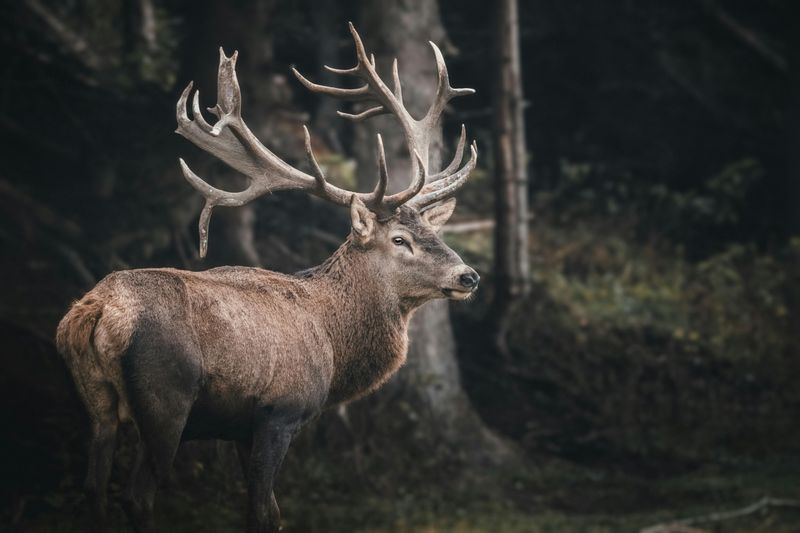
Graceful and vigilant, deer exhibit behaviors that suggest an awareness of impending danger. Their acute hearing and keen sense of smell enable them to detect predators long before they come into view.
In response to subtle changes in the environment, deer often move to safer grounds, demonstrating an instinctual drive for self-preservation. This heightened awareness is crucial for avoiding threats in the wild.
Deer play significant roles in forest ecosystems, influencing vegetation patterns and serving as prey for larger predators. Their ability to sense danger is critical to their survival, reflecting a deep connection to their environment.

